What We Learned About SaaS Sites From 30 Hours Of User Testing Data
We have analyzed the website structure of 30 different SaaS companies, closely monitoring 1,800 minutes of user interactions during the testing experience.
This article comes excerpted from Hiten Shah’s SaaS DNA Project: The Anatomy of a SaaS Marketing Site, a 30,000+ word research study on how users actually browse and experience SaaS marketing sites. Hiten Shah has built products on the web for over 10 years, including Crazy Egg, KISSmetrics, and now Quick Sprout. He breaks down everything he’s learned about building companies in his weekly email newsletter here.
As you’re designing a site or an app, it is common for developers to pour all their energies into beautifully responsive pages or into adding feature after feature. But how users actually experience a site or an app is more often determined by one simple thing—organization. If your site or app is disorganized, then no amount of beautiful images is going to save it. Users will get lost, confused, and ultimately leave, probably to a competitor.
But by aligning the organizational strategy of your site with the benefits and must-have features of your product, you cast a wide net, turning each piece of your website into a touchpoint for the full range of potential customers. It is these higher-level design choices, more than just color, photo, and font, that lead to conversions on a site. By organizing your information clearly, you can drive visitors exactly where you need them to go—the sign up page. It is how this organization affects the understanding new users have of a company or product that we have analyzed in collaboration with UserTesting.com. [Tweet “If your site or #app is disorganized, no amount of beautiful images is going to save it.”] We have analyzed the website structure of 30 different SaaS companies, closely monitoring 1,800 minutes of user interactions during the testing experience. We were able to parse out the user journey across each website, from homepage, to product page, to pricing page, and finally, to sign up and show that the clarity of information on your marketing site is crucial to its organizational effectiveness. Users quickly browse and skim your site, and as they do it’s vital that you organize information so that they’re able to both absorb it and dive deeper as needed. It is through this organization and flow of information that leads to them staying on your site, going deeper and deeper towards the eventual goal—conversion. In order to get through to users, the hierarchy of information is key. Just as important as the actual words on your website, is the way that they’re presented—without structure, content becomes meaningless. To understand how well users processed and retained information after spending time on each marketing site, we ask them to describe what the company does in 1 sentence once they had been able to look around the entire site. They were then asked to rate how confident they were in these summaries on a scale of 1-5 [Rating Scale: Not at all confident to Extremely Confident]. If a user is highly confident that their description of the company is accurate, but completely misses the mark in the 1 sentence summary, the organization of your site isn’t working properly. If they’re able to concisely sum up your product, however, it shows that you’ve accomplished one of the hardest things in marketing—capture someone’s attention, and ingrain your message.
How Well Users Understood 30 Different SaaS Sites

Highly-Rated Example: Shopify
Shopify’s website does a great job of communicating information clearly and concisely. Users were extremely confident in their understanding of what the company does—providing e-commerce solutions for small businesses. While Shopify offers multiple products on its marketing site, users clearly understood what the company does throughout the UserTesting.com experience. The success of Shopify’s marketing site lies in the way it organizes information—which is organized around the point of sale: “Sell online,” or “Sell in person.” This structure is customer-centric, rather than product centric. Rather than overwhelming users with a million different features, features are structured around the company’s main value proposition: “sell anywhere.” Because of this, users were able to go deeper and deeper into the aspects of Shopify’s product that they gravitated towards, whether it was setting up an online store, or the ability to sell via mobile. One user even pointed to Shopify’s mobile integration, and the ability to set up event-based shopping in his summary—retaining a detailed understanding of what Shopify offers. Arrow tooltips made it easy to switch between different features of Shopify’s platform—along with screenshots of the product—all on the same product page. By the time users got to the comprehensive features page, with 64 different features listed and split into 9 different categories, they already had the background knowledge to pick out what they were looking for. Even though Shopify offers multiple products and services, ranging from an e-commerce store to a physical point of sale, users walked away from the site with a specific understanding of the company, based on the aspects they found most compelling. Quotes from the responses:
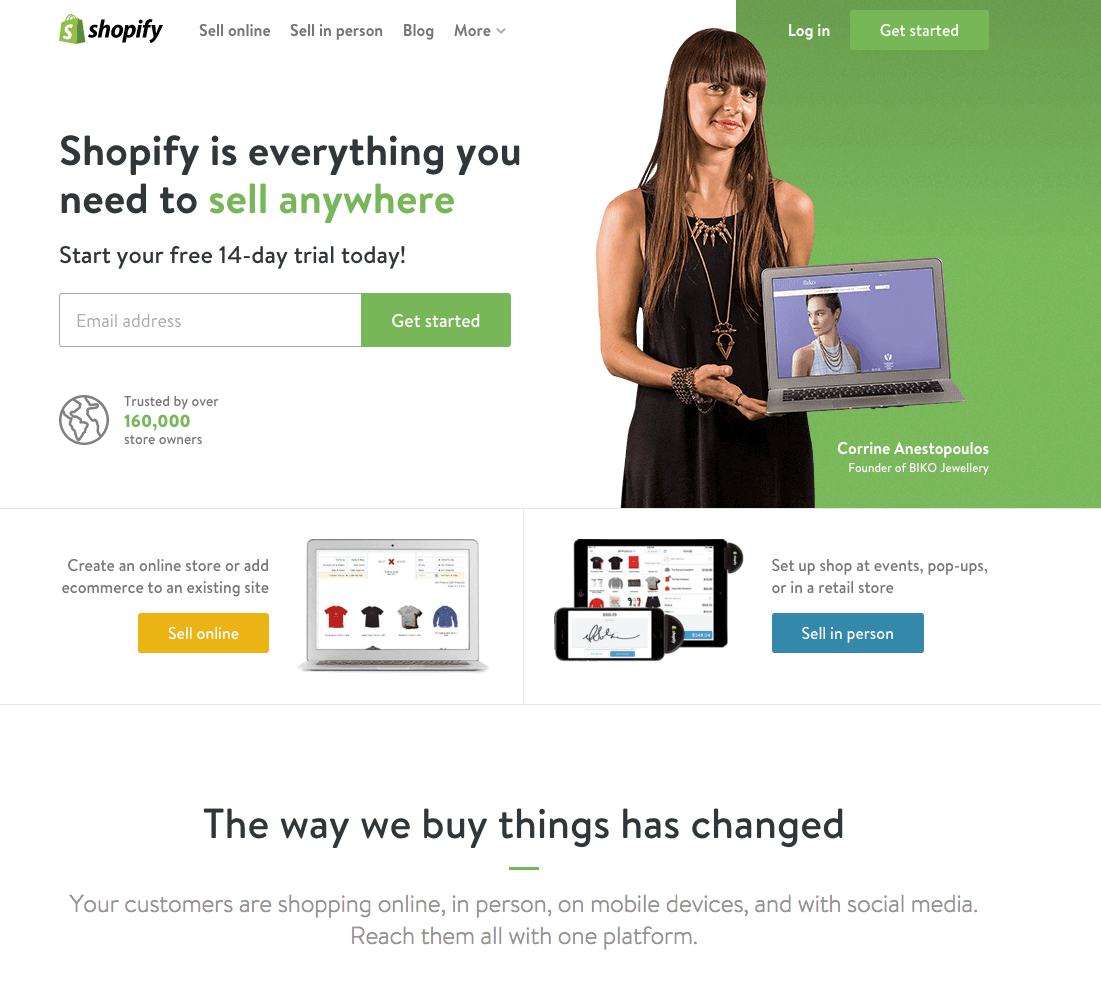
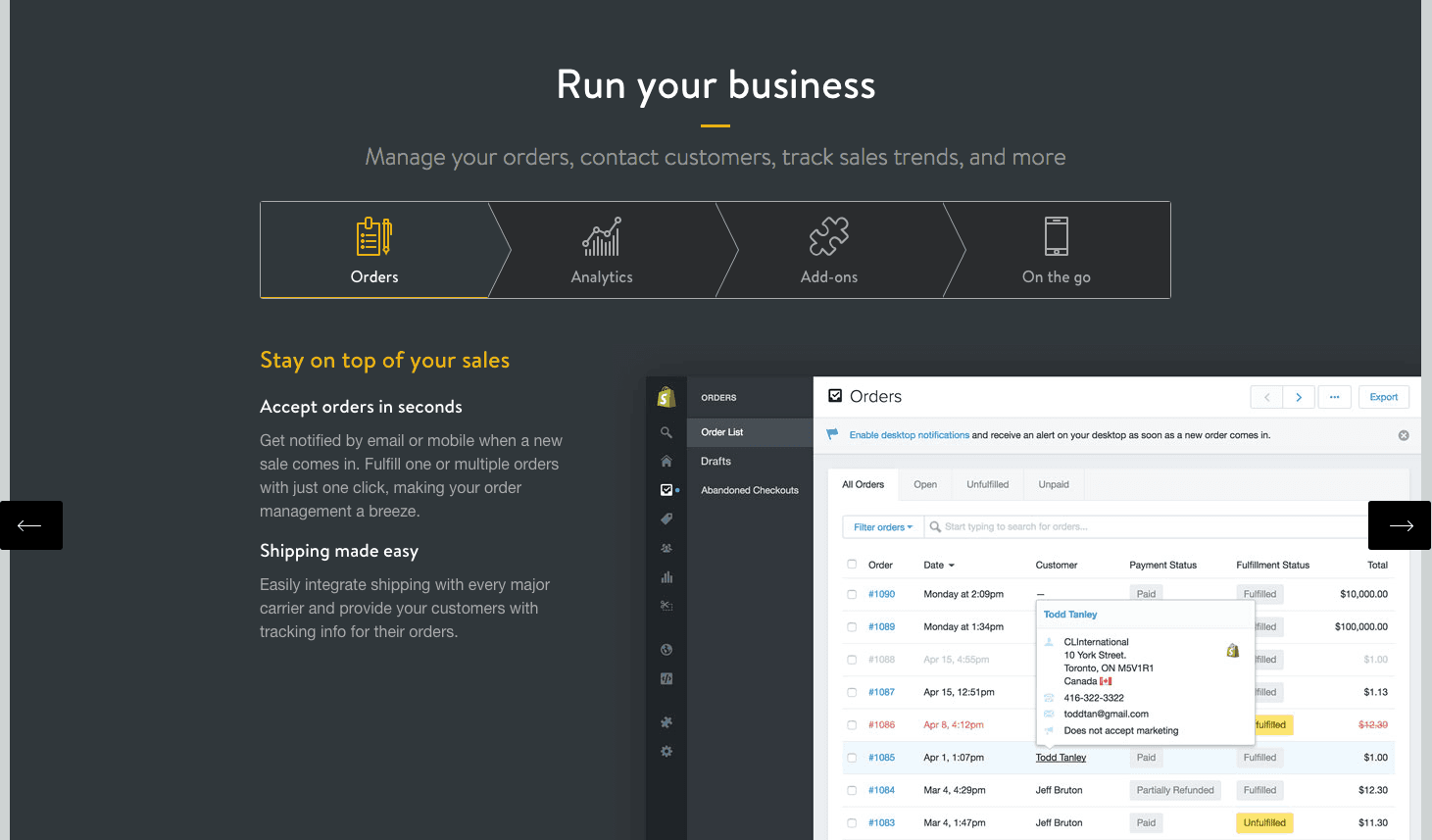
- Provides an integrated online store resource or mobile shop setup for events and retail.
- This company provides a website space that allows for small businesses to interact with customers through an online venue.
- Helps you build your own website.
Low-Rated Example: Salesforce
When a company’s marketing site includes multiple services, it’s difficult for users to understand what the company does overall, and even harder to concisely sum the company up. Salesforce presents a particularly striking example of this. While users were able to highlight specific features or products, they struggled to provide a larger umbrella description of what the company does. One user rated his understanding of the website with a 4, but said of the site, “I think it’s basically an analytics company that helps you manage your information.”Another user clicked on the products tab, selected the “App Cloud” service, and left the marketing site thinking that Salesforce helps startups build apps. The sheer quantity of different services and product offerings on Salesforce’s marketing site left users feeling overwhelmed and confused. Although the complexity of Salesforce’s products necessitates a weightier marketing site, users didn’t feel clearly guided in one direction or another. They were paralyzed by the number of choices available, and as a result, they more or less randomly chose between the different options. Part of the problem was that some users weren’t familiar with terms like “CRM” or “Customer Success” which left them unable to piece together a common strand throughout the company’s marketing site. Further, this feature-driven marketing copy prevented users from finding the product or service that would actually serve _their _needs. Interestingly, while multiple users felt overwhelmed by the amount of information on Salesforce’s website, they also described Salesforce’s platform as comprehensive—some felt that given more time, they could come out with a clearer understanding of the company. Quotes from the responses:
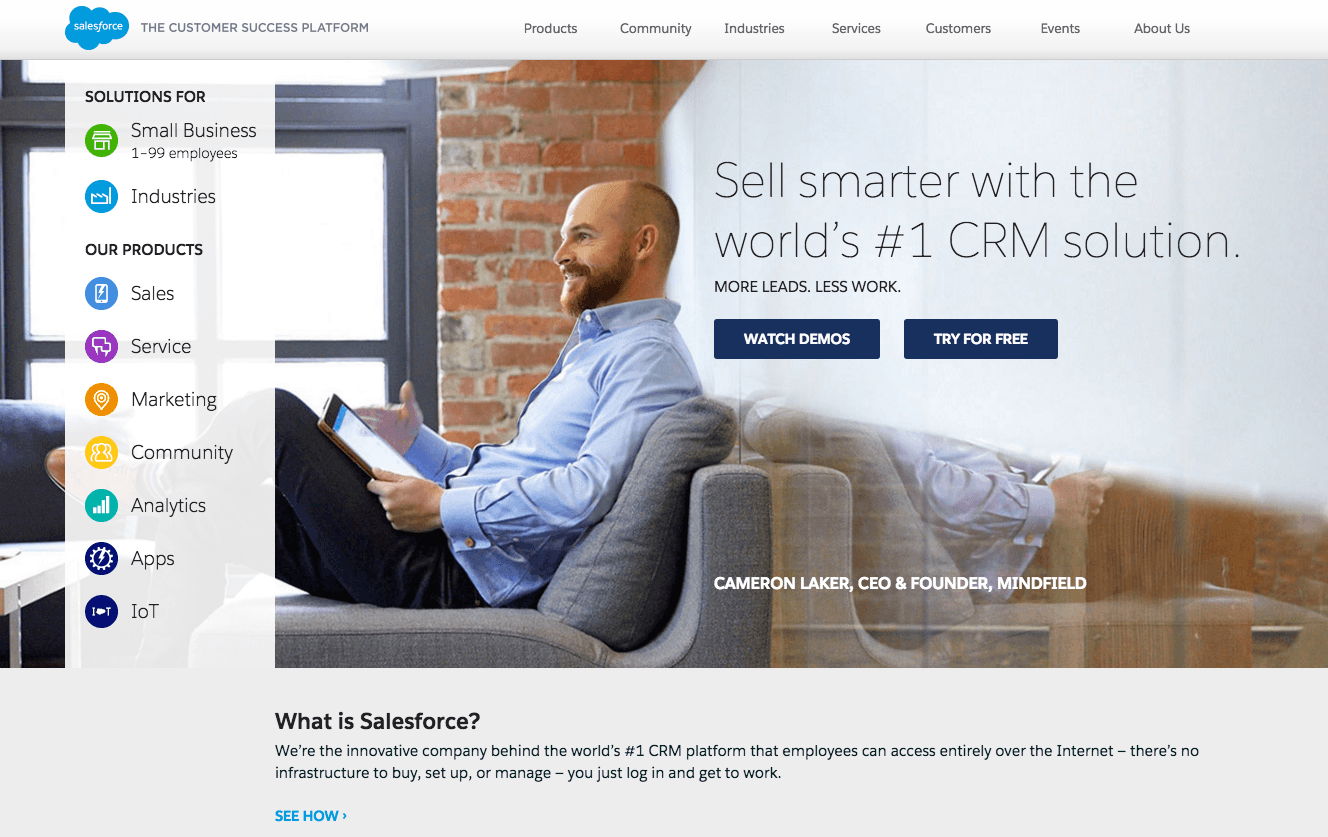
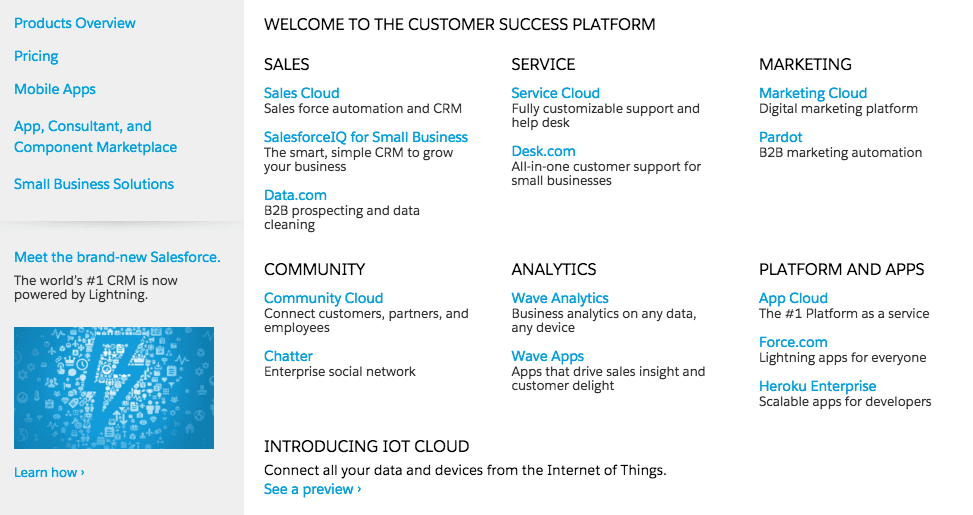
- They help businesses with the analytics and tracking of data and sales.
- This company helps businesses with many services to get the app online and social.
- Provides an umbrella of core business functions that would otherwise be overwhelming to create for one’s own business environment.
Key Takeaways
- **Prioritize importance. **Users like simple design, but prefer it when important or particularly useful information is readily visible, without having to navigate too much. The most important information should be immediately available to new visitors so they can get a grasp of the site before moving on.
- **Repetition encourages interaction. **Users don’t read your marketing site—they skim it. Make sure to reiterate the core information you want to communicate across your marketing site in a variety of forms and visual aids. Having the core value emphasized throughout, along with key features means that users will continually build a model of what your product does and why it’s good for them.
- **Eliminate choice whenever possible. **It’s always important to guide users throughout your site, but this is especially the case when you offer a variety of different services. Use benefit-driven language to maximize impact. They should be funneled throughout, leading to the inevitable conclusion of conversion.
Conclusion
When users didn’t understand what a company did, one word always sprung to mind: Help. When you don’t organize your site properly, visitors have to ask for help. And when that happens, you have already lost them. If you want to retain users, whether on a SaaS site, or in a mobile app, you need to present them with clear, logical choices. [Tweet “If you want to #retain users, you need to present them with clear, logical choices.”] This study shows exactly how you can make data-driven choices for your site or product. You need to know how people are actually using your product to truly understand where it needs improvement. For SaaS sites, this means logical guidance throughout the site so they completely understand the company and the product. For an app this means presenting a clear organization within the app, so users know exactly where they are at any time and exactly how they can do what they want. In both cases, this is how you win and keep customers. **Hiten Shah** has built products on the web for over 10 years, including Crazy Egg, KISSmetrics, and now Quick Sprout. He breaks down everything he’s learned about building companies in his weekly email newsletter here.
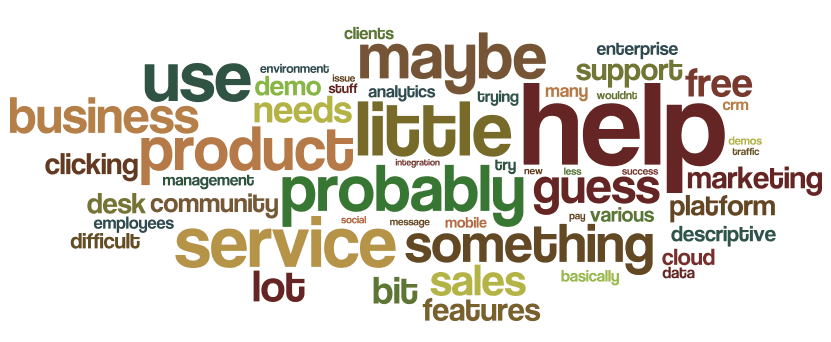

Hiten Shah
Co-founder of Crazy Egg
Hiten Shah is co-founder of several SaaS businesses including, Quick Sprout, Crazy Egg & Draftsend.
More from Hiten




